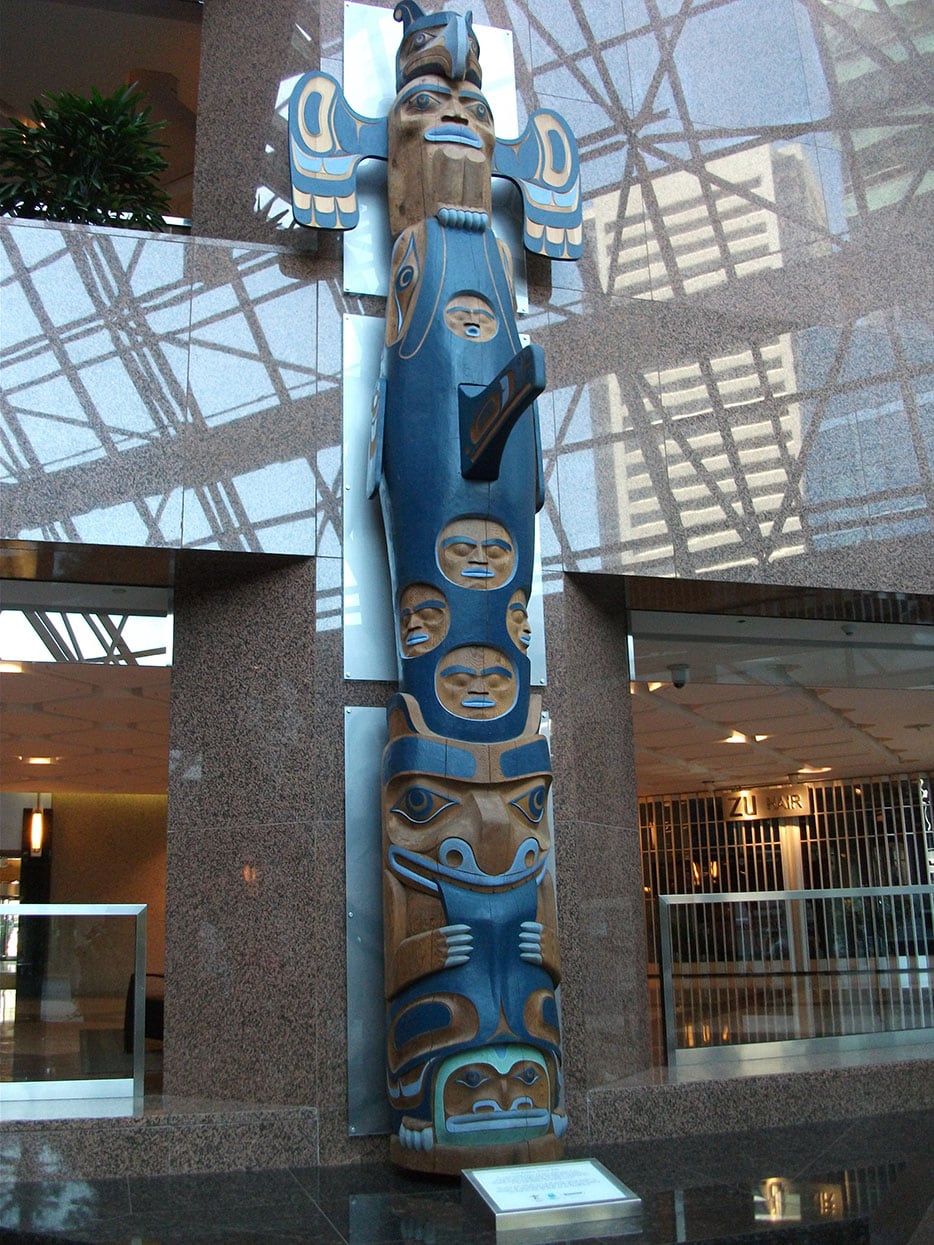Legacy Sea-to-Sky Totem Pole
Klatle-bhi
Calgary

Location: Suncor Energy Centre, 111 5 Avenue SW, Calgary, AB
The totem pole is currently resting while the Suncor Energy Centre sees through its redevelopment project, and will be relocated to the West Lobby once complete in 2027.
About the work
The legacy sea-to-sky totem pole was commissioned by Petro-Canada, a Suncor Energy owned company, in 2008 for the Vancouver 2010 Olympic and Paralympic Winter Games. The totem pole reaches 22-feet in height and is carved from red cedar, a tree species native to Kwakwaka’wakw / Squamish, British Columbia.
The work includes imagery of key figures from Indigenous stories, including a killer whale, bear, and thunderbird – all which come together to tell the story of how Indigenous Peoples came to reside in sea-to-sky country. It also includes the face of an Olympic athlete, symbolizing community, and the coming together of people.
None of the faces represented on the totem pole have eyes, by the artist’s design. Klatle-bhi explains that this is because “in all my years I’ve learned that seeing is not believed, believing is seeing. Your eyes are only to navigate the physical world, but your spirit and your heart is to navigate life.”
The totem pole was laid for a temporary rest through traditional ceremony in October of 2024 while Suncor Energy Centre sees through its redevelopment project. The work will be raised once again following project completion in 2027.
Legacy sea-to-sky totem pole, 2008
Kwakwaka’wakw traditional carving on red cedar
About the artist
Klatle-bhi (pronounced “Cloth-bay”) is a contemporary Indigenous artist of Kwakwaka’wakw and Squamish ancestry. He works primarily in red and yellow cedar, creating totem poles, masks, and carved panels that draw from traditional Northwest Coast forms while speaking to present-day cultural resurgence.
His practice blends ancestral stories with personal vision, using carving techniques and symbolic language to explore themes of identity, transformation, and spiritual continuity. Klatle-bhi is widely recognized for his large-scale public commissions, which are often rooted in ceremony and shaped through active collaboration with community.
Through his work, Klatle-bhi offers a vision of Indigenous culture that is both grounded in tradition and engaged with the contemporary world—where art becomes a living expression of cultural knowledge, respect, and renewal.